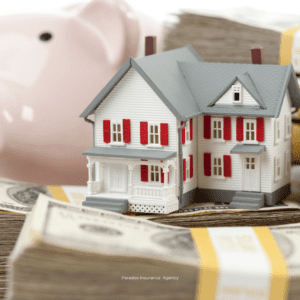
The “What” In Rates
When protecting our homes, having the right insurance coverage is crucial. However, many homeowners often wonder why their insurance rates vary significantly. Several factors influence home insurance rates, depending on location, coverage choices, and personal circumstances. Let’s explore the key factors affecting home insurance rates. Although this article focuses on Kalispell, Montana, many of these items apply across all the states we serve.
Understanding Home Insurance Rates:
Home insurance rates are determined by several factors, all of which aim to assess the risk associated with insuring your home. Insurers need to consider various elements to calculate your premium correctly. We discuss it below and want to emphasize that every carrier is different and uses all of these items differently to determine eligibility and premium. Here are the primary factors that affect home insurance rates:
- Location:
Your geographical location plays a significant role in determining your home insurance rates. Areas prone to natural disasters like hurricanes, earthquakes, or wildfires generally have higher insurance premiums. Since we’re focusing on Kalispell, Montana, it’s important to note that factors like the proximity to forests, the risk of wildfires (Read more about this risk HERE), and severe winter weather conditions can impact insurance rates in this region. - Dwelling Characteristics:
The characteristics of your home, including its age, size, construction materials, and overall condition, help insurers assess its replacement cost and vulnerability to risks. Older homes and those made of more combustible materials can increase insurance rates, as they may be more susceptible to damage. - Home Security Measures:
Insurance providers offer discounts to homeowners who have implemented security systems, smoke and burglar alarms. These devices lower the risk of burglary and fire-related incidents and can help reduce your premium. - Personal Claims History:
Your personal claims history, including the number and severity of previous insurance claims, can influence your rates. Insurers view policyholders who have made multiple claims as higher-risk individuals and may adjust premiums accordingly. - Insurance Score:
Believe it or not, your credit score plays a role in determining your home insurance rates. Although your Insurance Score is not directly related to your credit score, some factors to overlap. Studies have shown that individuals with lower credit scores tend to file more insurance claims. Therefore, insurance companies often use some aspects of credit history to indicate potential risk. - Coverage Options:
The coverage you select for your home insurance policy, including the deductible amount, liability limits, and additional coverages like flood or earthquake insurance, can impact your premium. Opting for higher coverage limits or adding extra protection will typically result in higher rates. - Insurance Company Factors:
Finally, insurance companies each have their own underwriting guidelines and risk assessment methods, resulting in very different rates for similar coverage (rarely is coverage ever identical). It’s essential to consider proposal from multiple insurers to find the best policy that suits your needs.
In summary, home insurance rates are influenced by several factors, ranging from geographical location to personal claims history and coverage choices. Considering these factors, you can make informed decisions and find the best insurance coverage that suits your needs and budget.
Remember, it’s always a good idea to consult a reputable insurance agent, like Paradox Insurance Agency, who can help guide you through the process and ensure you have the right coverage for what is often your greatest asset.
#homeinsurancerates #insurancefactors #KalispellMontana #paradoxinsures

